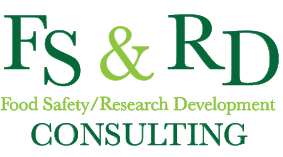Food Defense - How to ensure that you have a strong food defense program
Whereas Food Safety addresses the accidental or unintentional contamination of food products that can be reasonably anticipated, Food Defence focuses on protecting the food supply from intentional contamination. Food defense programs have become more important over the years as threats of tampering are becoming more commonplace. The tylenol incident in 1982, where 7 people were killed due to cyanide contamination sparked wide spread panic. From this episode, corporations began to assess how to keep their products safer. http://www.missionmode.com/5-crisis-management-truths-from-the-tylenol-murders/
A good food defence program starts with a risk based analysis on the threats that could be made against your company. A TACCP - or Threat Analysis Critical Control Point system is similar to HACCP (Hazard Analysis Critical Control Point) in that it puts in place control points over the threats that you have identified.
The analysis will focus on :
1) Security of facility
2) Food security through supply chain
3) Food fraud
4) Sabotage or tampering
5) Logistics en route
One of the biggest threats that could occur within the facility is sabotage or tampering, so precautions need to be put in place to mitigate this potential threat. Security of facility will focus on ensuring that only appropriate personnel can enter. This could include a gated entrance but will include locked doors, restricted access and cameras to monitor activity around the facility. There will be limited access for visitors or contractors so that they don't have direct access to the manufacturing floor. Key areas are typically restricted so that only authorized personnel can enter. The hiring of personnel may include a background or police check prior to them being hired. In addition to the manufacturing floor, security within the facility needs to consider document integrity and safety. Most documents will be electronic or paper so controls need to be in place to ensure that these are secure. How much potential data would be lost if the on-site computer crashed? It is important to back these up on a regular basis off site.
Food security through the supply chain can be managed using many of the programs that you may already have in place. By having a robust supplier approval program you can have some assurance that you are mitigating this risk. By setting strict requirements that your suppliers must meet and then using only these "approved suppliers" you are minimizing your potential for exposure. Upon receiving the product your receivers are ensuring that the product is what you've purchased and is coming from these approved suppliers. Ensuring that the truck is locked at the supplier and is unlocked when it reaches your facility is another precaution that can be taken.
Food fraud seems to be happening more frequently, or perhaps it has been given more media attention after the Ikea "horse meat" incident. It is an important threat that you will need to analyze within your food defence program. Certain ingredients do have a greater risk for fraud where they may be substituted or blended down; 100% extra virgin olive oil, saffron, honey are just a few. A risk analysis needs to be done on all of the ingredients and raw materials that you use to determine which are the most vulnerable to food fraud and then measures put in place to minimize this risk. These measures may include additional chemical or species testing on the raw material or may include obtaining Certificates of Analysis on a more frequent basis.
Sabotage or tampering can occur at the facility, therefore strict security measures (as above) are put in place. However, you may identify that are also vulnerable during transport or when you are on shelf in the store. Therefore, you might use tamper evident packaging on the outer cartons or on individual packages to increase the security of your products.
Logistics en route to the distribution centre and store is also an area that you will wish to look at when you do your threat assessment. These carriers will need to meet standards that you've put in place both from keeping your product food safe (IE. refrigeration, freezing, etc) but also in keeping your product safe from potential threat. These criteria would be working with a reputable company, ensuring that the truck doors are locked when they pick up and then are only unlocked once the product reaches the customer. Having contracts in place with your carriers and ensuring that these are the only carriers used are typical ways of mitigating this risk.
Your food defense program needs to identify all potential threats to your product and then put measures in place to minimize the risk to your product and by extension your brand. This is just one more way to maintain brand integrity. If you feel that there is more that can be done with your program and you aren't sure where to start, feel free to email me at melissastevenson@fsrdconsulting.com or check out my website at www.fsrdconsulting.com. I would be more than happy to review and identify any areas of improvement that you may wish to make.
